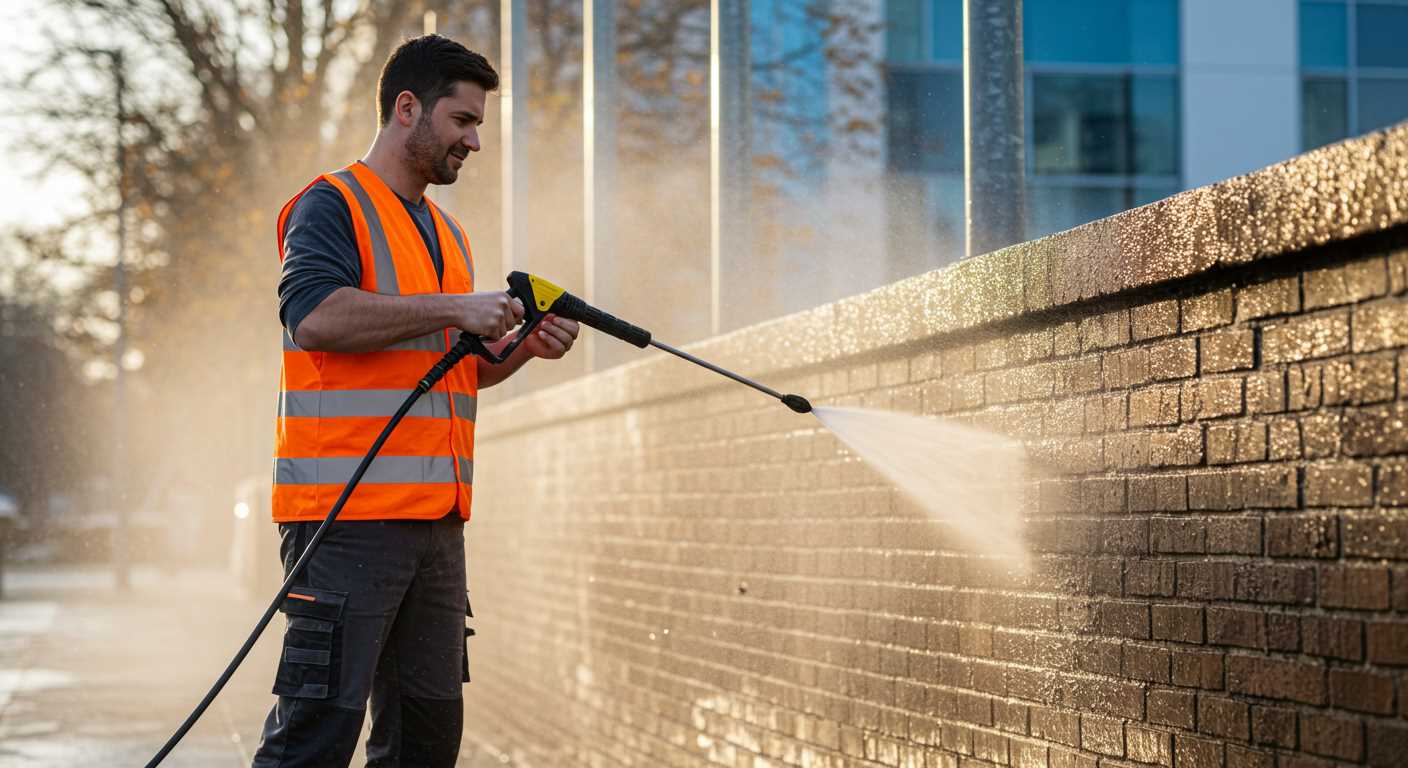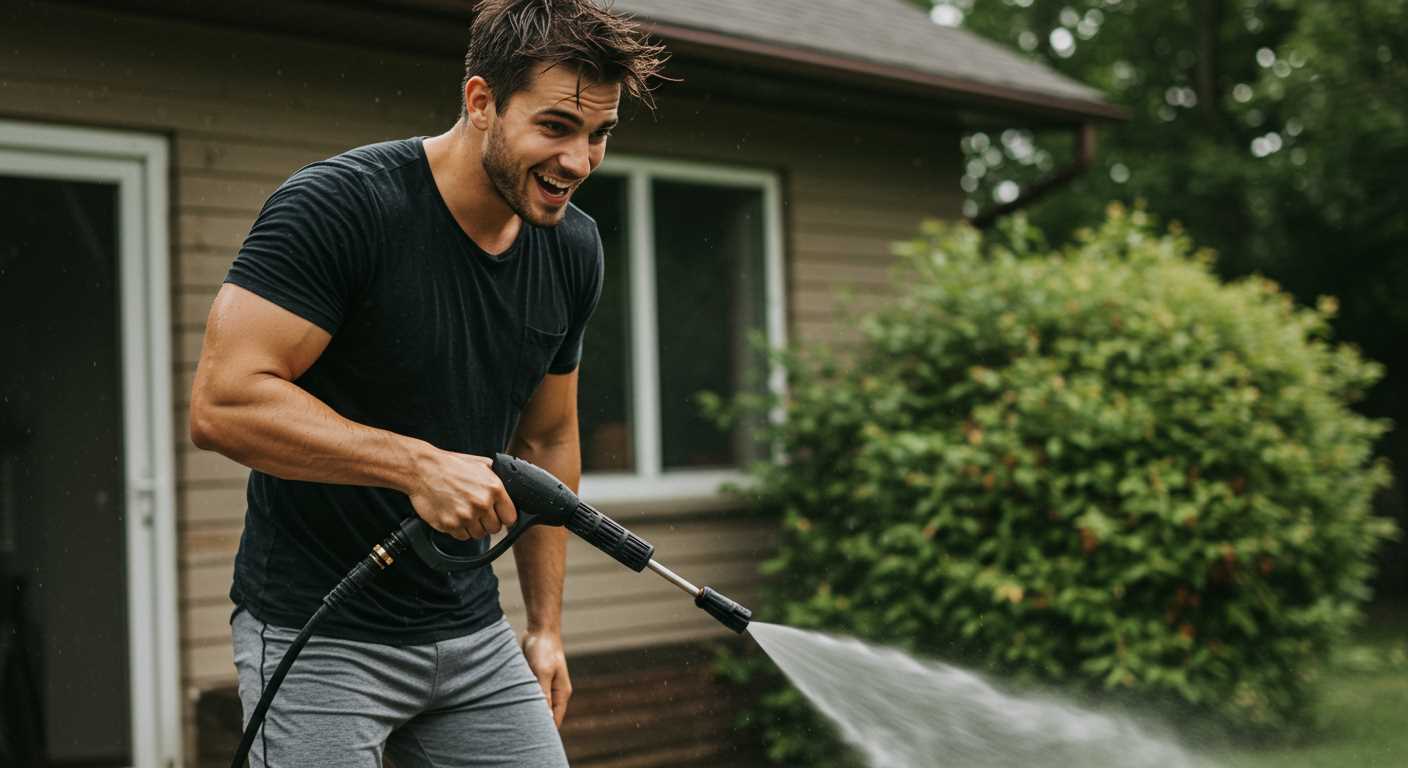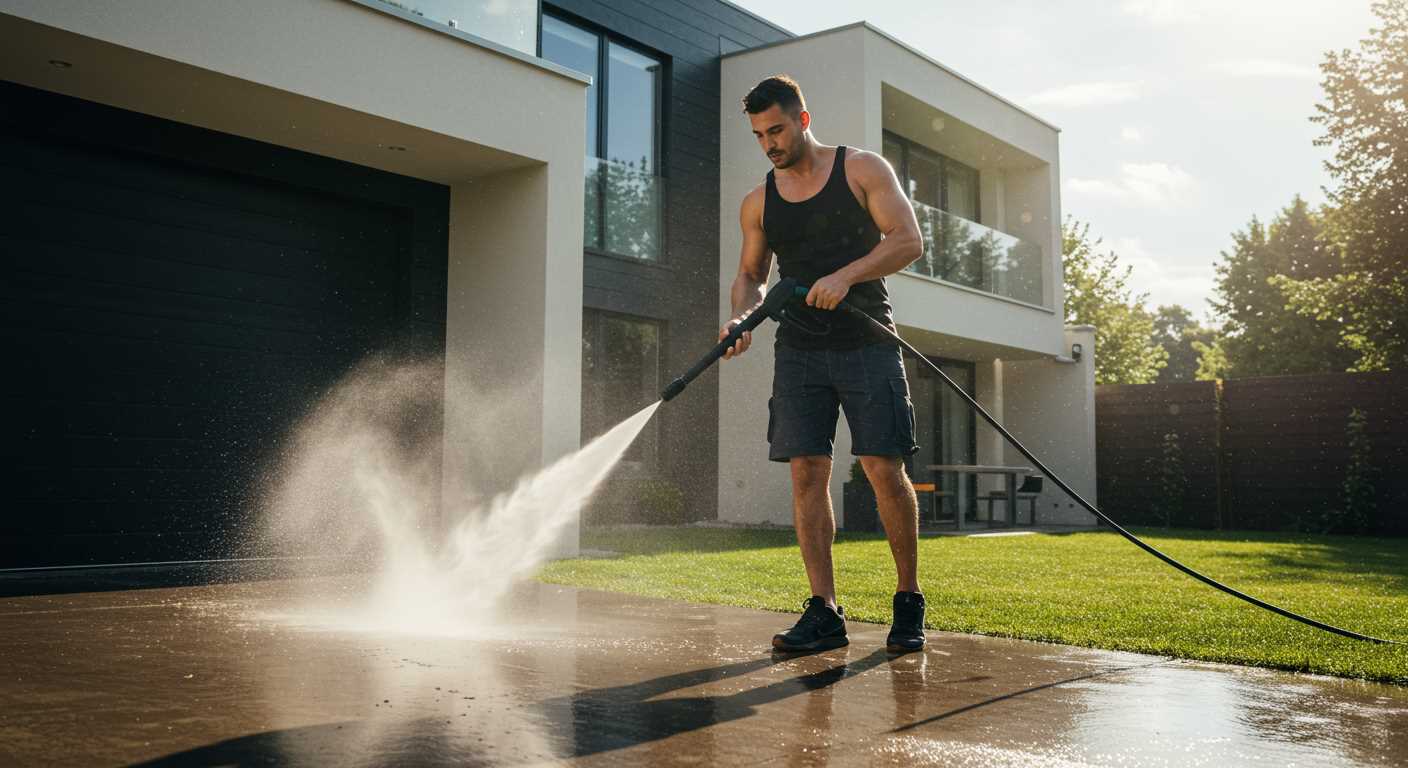



Using high-pressure cleaning tools can be a double-edged sword. While they excel at removing stubborn grime, their potential harm to our ecosystems must not be overlooked. Conventional models often utilise significant amounts of water and may require chemical detergents that are harmful to local flora and fauna.
One significant concern is water runoff. This can carry contaminants, including detergents and debris, into drainage systems, which ultimately lead to rivers and lakes. It’s essential to opt for eco-friendly detergents when available, as these typically break down more easily and pose less risk to aquatic life.
Another vital consideration is energy consumption. Many machines operate on electricity or fuel, generating carbon emissions. To mitigate this, users should seek energy-efficient models, which not only perform well but also reduce ecological footprints. Additionally, regular maintenance can enhance performance, prolong the lifespan of the equipment, and ensure effective cleaning with minimal environmental impact.
Ultimately, responsible usage, combined with choosing greener options, can allow for effective cleaning without compromising the integrity of our ecosystems. By being mindful of our choices, we can enjoy the benefits of advanced cleaning technology while protecting the environment we cherish.
Impact of High-Pressure Cleaning Tools on Nature
Choose eco-friendly alternatives wherever possible. Many brands now manufacture models that minimise water usage without sacrificing cleaning power. Look for options labelled as water-efficient or sustainable, which often use less than 5 litres per minute, compared to traditional machines that can consume three times that amount.
Detergents and Cleaning Agents
Be cautious with cleaning solutions. A significant source of contamination involves harsh chemicals that can enter waterways. Opt for biodegradable and non-toxic cleaners to avoid harming flora and fauna. Some eco-friendly brands even offer concentrated formulas that require less material overall.
Water Runoff Management
Manage runoff effectively. Conduct cleaning tasks in areas where water can either soak into the ground or be collected for reuse. Consider the following:
- Plan jobs during dry seasons to reduce excess water pooling.
- Create containment barriers using eco-friendly materials to direct water flow.
- Regularly test local water sources for pollutants if your activities frequently intersect with natural bodies of water.
By implementing these practices, one can significantly reduce the adverse effects high-pressure cleaning tools can have on natural ecosystems while achieving desirable cleanliness outcomes.
Impact of Pressure Washing on Water Usage

Utilising high-powered cleaning tools can significantly consume water. On average, a standard cleaning device may use between 3 to 8 gallons of water per minute, depending on the model and settings. This contrasts sharply with traditional garden hoses, which can expend up to 15 gallons per minute. Thus, while cleaning solutions may appear water-heavy, the actual usage can be more controlled, leading to potential conservation when employed judiciously.
To mitigate excess water consumption, I recommend using these devices strategically. Focus on areas that truly require thorough cleaning and adjust the nozzle or attachment for maximum efficiency. For instance, using a narrow spray pattern can effectively reduce the volume of water utilised while maintaining cleaning efficacy.
Implementing a water management system is advisable. Capturing runoff for reuse in landscaping or outdoor chores is one approach. Collecting rainwater in barrels provides a sustainable alternative for general cleaning tasks, ensuring less reliance on mains water supply.
Regular maintenance, both of the equipment and hoses, can enhance water efficiency as well. A well-maintained tool functions optimally, reducing waste and ensuring that every drop counts.
Ultimately, understanding the specific needs of your cleaning projects allows for more responsible water use, enhancing sustainability practices without sacrificing performance.
Chemical Runoff: Risks of Cleaning Agents
.jpg)
Utilising cleaning solutions that contain harmful ingredients poses significant hazards to aquatic ecosystems. When these substances enter storm drains or water bodies following washing procedures, they can adversely affect local wildlife and water quality. To mitigate this impact, opt for eco-friendly formulations that biodegrade rapidly and are less toxic to the environment.
Be cautious with the quantity of detergent utilised. Overapplication can lead to excessive runoff, increasing the likelihood of pollution. It’s advisable to adhere strictly to the manufacturer’s guidelines on dilution and usage. This practice not only minimises environmental damage but can also enhance the efficacy of the cleaning process.
Implementing strategies to contain runoff is critical. Use absorbent mats or barriers to prevent chemicals from reaching drainage systems. Collecting and properly disposing of wastewater ensures that fewer harmful substances return to natural habitats.
Monitoring local regulations regarding the use of certain cleaning agents can help avoid unintended violations. Many regions have restrictions in place that prohibit specific chemicals due to their detrimental effects on natural ecosystems. Staying informed enables compliance and demonstrates environmental responsibility.
Educating others about the risks associated with chemical runoff reinforces a culture of sustainability. Sharing information about alternatives and best practices fosters an informed community committed to protecting natural resources.
Noise Pollution from Cleaning Equipment
One significant concern regarding high-pressure equipment is noise generation. Many models emit sound levels exceeding 85 decibels, categorised as damaging to hearing with prolonged exposure. Studies have shown that noise pollution can adversely affect both human health and wildlife, leading to stress and disruption of natural habitats.
To mitigate these effects, I recommend selecting models designed with noise reduction features. Innovations in sound-dampening technology can lower operational noise levels considerably. Additionally, using these devices during regulation-friendly hours can help minimise the impact on surrounding communities.
Consider adhering to local regulations concerning permissible noise levels and operational times. This practice not only enhances community relations but also contributes positively to public awareness of our responsibility in using such equipment.
It’s beneficial to explore options such as electric units, as they typically operate more quietly than their gas counterparts. Research also suggests pairing equipment with suitable accessories, such as quieter nozzles, which can further decrease sound output.
Responsible usage and selection of lower-noise alternatives align with sustainable practices while effectively addressing cleanliness needs. By prioritising noise management, we take a significant step towards reducing our overall ecological footprint.
Energy Consumption of Electric vs. Gas Wash Equipment
Choosing between electric and gas-operated models hinges significantly on energy efficiency and environmental impact. Electric models typically consume less energy, averaging around 1.5 to 2 kWh per hour, making them more sustainable for residential use. In contrast, gas units can emit up to 5-7 horsepower, leading to higher fuel consumption and increased CO2 emissions during operation.
The table below outlines the key differences in energy consumption between electric and gas machinery:
| Type | Energy Consumption (kWh/h) | Fuel Type | CO2 Emissions (g/h) | Noise Level (dB) |
|---|---|---|---|---|
| Electric | 1.5 – 2 | Electricity | 0 | 60 – 70 |
| Gas | Varies (equivalent to ~3 – 5 kWh) | Gasoline | 200 – 300 | 80 – 90 |
Electric systems excel in urban settings due to their quiet operation and minimal emissions, making them ideal for home use. Gas models, while powerful, tend to be suited for commercial tasks where mobility and higher power demand outweigh concerns about emissions.
Ultimately, selecting the right type comes down to the specific cleaning needs and considerations regarding long-term environmental impact. I recommend evaluating the operational context and choosing accordingly to reduce overall energy consumption efficiently.
Best Practices for Eco-Friendly Washing

Utilise biodegradable detergents to minimise toxicity and ensure safe runoff. Opt for products that break down naturally and have minimal environmental impact. Avoid harmful chemicals that can leach into soil and waterways.
Consider employing a lower PSI setting. High pressure isn’t always necessary to achieve cleanliness, and using a gentler setting conserves water and reduces energy usage. Assess the surface before choosing your pressure level.
Direct water runoff to landscaped areas whenever possible. This technique allows water to be absorbed by plants instead of flowing into storm drains, where it may contribute to pollution. Always check local regulations regarding runoff management.
Capture excess water using a vacuum attachment. This reduces waste and prevents contaminants from reaching the surrounding environment. It also saves on water usage compared to traditional cleaning methods.
Schedule your cleaning sessions during cooler times of day. This reduces water evaporation and enhances the effectiveness of cleaning agents. Early mornings or late afternoons typically provide the ideal conditions.
Avoid using excessive water flow. Just because equipment can use high volumes doesn’t mean it should. Implementing a water-saving nozzle can drastically decrease consumption while still achieving satisfactory results.
Regular maintenance of cleaning equipment extends its lifespan and efficiency. Well-maintained machines use less energy and provide better performance, further reducing environmental impact.
Finally, explore eco-friendly alternatives to traditional methods. Manual scrubbing or using steam cleaners may prove just as effective on certain surfaces, providing a sustainable choice without harsh chemicals.
Regulations and Guidelines for Pressure Washer Use

Adhere to local legislation regarding water usage and chemical discharges. Many regions enforce restrictions aimed at conserving water and preventing environmental contamination. Thus, consulting local ordinances is essential.
Best practice dictates using biodegradable cleaning agents that comply with environmental standards set by regulatory bodies like the Environmental Protection Agency (EPA). When selecting these products, verify labels for compliance indicators.
Follow manufacturer instructions diligently to ensure the equipment operates within recommended parameters. Using the correct nozzle and pressure setting reduces water consumption and chemical usage, promoting eco-friendliness.
Obtain permits when necessary for large-scale cleaning projects, particularly those affecting public spaces or sensitive areas. Engaging local authorities for guidelines ensures compliance and environmental stewardship.
- Check for local water use regulations.
- Utilize eco-friendly cleaning solutions.
- Inspect equipment settings before use.
- Secure permits where required, especially for communal spaces.
- Document chemical usage to ensure compliance with safety protocols.
Be aware of noise regulations during operations, particularly in residential areas. For quieter models, consider electric machines, as they produce less sound compared to gasoline counterparts.
Engage with community resources for best practices in maintenance and sustainable use. Local environmental groups often offer workshops that cover safe and responsible cleaning techniques.
Alternatives to Pressure Washing for Green Cleaning
Opting for alternatives can hugely reduce environmental impact while still achieving excellent cleaning results. Start considering methods such as soft washing, which utilises low-pressure water combined with eco-friendly detergents to gently remove dirt and grime without excessive water use. This technique is particularly effective on roofs and delicate surfaces.
Manual Cleaning Techniques
.jpg)
Employing brushes and biodegradable cleaning solutions is another worthwhile approach. Scrubbing surfaces by hand with natural detergents not only conserves water but also eliminates harmful runoff. Microfibre cloths and mop heads can help effectively gather dust and dirt, making this method both thorough and eco-sensitive.
Steam Cleaning

Steam cleaning employs high-temperature steam to sanitise surfaces. This method eradicates dirt and bacteria without chemicals, resulting in minimal environmental impact. It’s especially adept for indoor spaces and areas where chemical sensitivity is a concern.
Additionally, consider rainwater harvesting for outdoor cleaning projects. Collecting rainwater can provide a sustainable source for garden cleaning, pathways, or vehicle washings. Using a garden hose with a nozzle allows for controlled water usage and enhances efficiency.
Choosing these alternative cleaning methodologies ensures a commitment to eco-conscious practices while maintaining high standards of cleanliness and hygiene. Each option presents its benefits, allowing for tailored solutions that fit specific needs and environmental values.
FAQ:
Do pressure washers contribute to water pollution?
Pressure washers can contribute to water pollution, particularly if they are used improperly. When cleaning surfaces, dirt, oils, chemicals, and other contaminants can be washed off and enter drainage systems or local water sources. It is essential to avoid using harsh detergents and to always ensure that wastewater is contained and properly disposed of to minimise environmental impact.
Are there eco-friendly alternatives to pressure washing?
Yes, there are eco-friendly alternatives to traditional pressure washing. For instance, using biodegradable cleaning solutions along with a lower pressure setting can reduce the likelihood of harmful runoff. Additionally, manual scrubbing with natural cleaners or using steam cleaning methods can achieve similar results without the environmental implications associated with high-pressure systems.
How do pressure washer chemicals affect the environment?
The chemicals used in pressure washing can harm the environment by contaminating soil and water sources if they are not biodegradable. Many commercial cleaners contain toxins that may adversely affect aquatic life when they enter waterways. It is advisable to opt for eco-friendly cleaning products that break down naturally and do not harm local ecosystems.
Can pressure washing be done responsibly to lessen environmental impact?
Yes, pressure washing can be conducted responsibly. Here are a few tips: use biodegradable soaps, adjust the pressure to the minimum required for the task, implement water containment systems to prevent runoff, and choose to wash during dry periods to allow for quick evaporation. Following these practices can help reduce the potential negative impacts on the environment.








